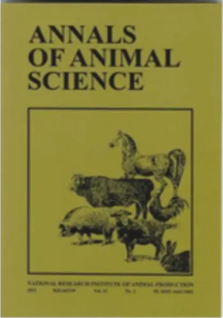Document type: technical article published in Pig Progress
Author: Samaneh Azarpajouh
Preview: Tail biting is an example of oral manipulation, often occurring in barren pens, and it can result in wounds and hemorrhages, infection, crippling and even death. According to research, tail posture is advocated as an indicator for the presence of tail biting behaviour in pigs, and a potential indicator of their emotional state. Studies showed that pigs with hanging tails are more likely to have tail bite lesions than pigs with upright tails. In addition, it is suggested that tucked tails can be used as early detectors of tail biting. However, pig tail posture needs to be assessed more carefully, including posture, and motion to be meaningful as a possible welfare indicator.
Tail biting risk factors
Tail biting has highly complex multifactorial causes which makes it hard to control. Management errors, such as overcrowding, high ammonia levels, competition for food, and lack of enough enrichment materials result in tail biting. In addition, the smell of injured tail tissue with necrosis, inflammation and blood attracts pigs to start nibbling and biting the affected area. Oxidative stress causing inflammation and death of cells, temperature fluctuation, disease status, draughts, suboptimal or imbalanced diet, gastrointestinal discomfort, and season are other rick factors in the development of tail biting.
Impact of tail biting on swine industry
Tail biting compromises pig welfare and it causes significant economic losses for pig producers, as well. The economic loss includes increased morbidity and mortality due to infectious tail wounds, decreased growth performance, labor and veterinary costs, as well as losses due to carcass condemnation at slaughter. Furthermore, the wounds are often treated with antibiotics, and controlling tail biting outbreaks can reduce antibiotics administration on swine farms.
Tail posture in pigs
Tail posture in pigs could be associated with behavioural activity levels. Pigs have their tail in a curled posture approximately 75% of the time and in a hanging posture 25% of the time. Tails in active pigs usually have an upwards curl, but tails in resting pigs are relaxed.
Active pigs, with their tail in an upward curl, usually lack any tail damage. In case of food frustration or after surgical procedures, tail wagging significantly increases. Furthermore, tail posture shows pain or stress, and pigs clamp their tail stump between their hind legs without showing any signs of tail motion after tail docking. Research studies indicate that during a tail biting outbreak, pigs incline to keep their tails between the legs. Pigs with damaged tails show more tail wagging due to skin irritation.
Tail biting prevention and control
Providing adequate enrichment materials such as chains or rubber hoses, and rooting materials such as straw, mushroom compost or maize silage in pens lowers tail biting levels. Pigs prefer ingestible, chewable, and destructible objects. It is notable that pigs quickly lose interest in all novel objects regardless of their physical properties. Therefore, rooting materials should be clean and renewed frequently.
Identify and avoid competitive situations
Another prevention strategy is to identify and avoid competitive situations over food and water or preferred lying areas that lead to frustrating interactions between pigs. [...] Tail docking tends to reduce tail biting incidence, but it does not resolve the causes of this abnormal behavior.





